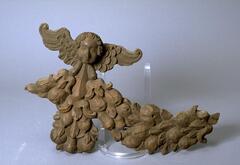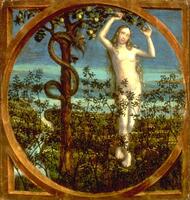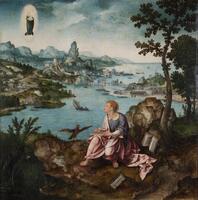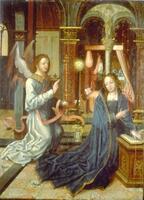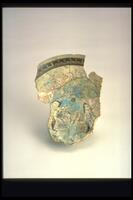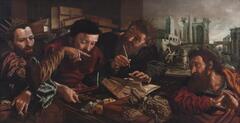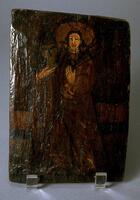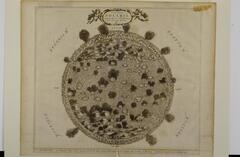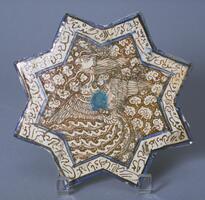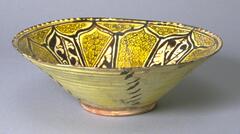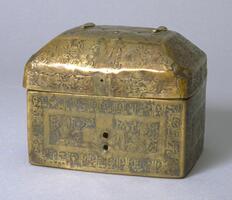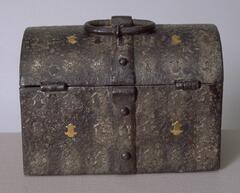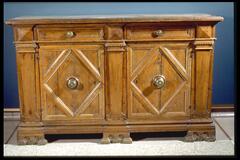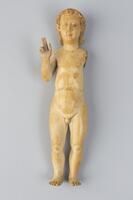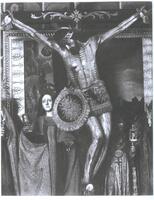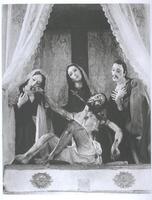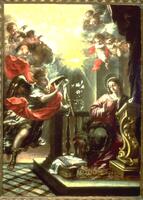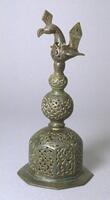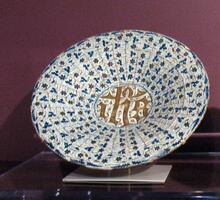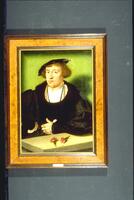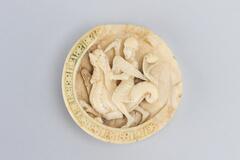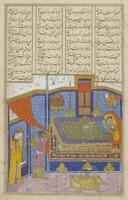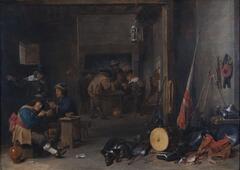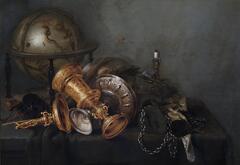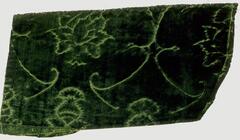35 Items in this Learning Collection
Collection Object
Collection Object
Collection Object
Collection Object
Collection Object
Collection Object
Collection Object
Collection Object
Collection Object
Collection Object
Collection Object
Collection Object
Collection Object
Collection Object
Collection Object
Collection Object
Collection Object
Collection Object
Collection Object
Collection Object
Collection Object
Collection Object
Collection Object
Collection Object
Collection Object
Collection Object
Collection Object
Collection Object
Collection Object
Collection Object
Collection Object
Copyright
All Rights Reserved
()
Casket with inscription in floriated Kufic script
Accession Number
1959/1.113
Title
Casket with inscription in floriated Kufic script
Artist(s)
Iranian
Artist Nationality
Iranian
Object Creation Date
12th century
Medium & Support
bronze
Dimensions
4 1/8 in. x 4 1/2 in. ( 10.5 cm x 11.4 cm )
Credit Line
Museum Purchase
Label copy
Floriated Kufic is a style of writing that originated in Egypt in the late tenth century and subsequently spread to the entire Islamic world. Blending the geometric character forms of the Kufic script with curvilinear floral ornament, this script was especially favored for its beauty and complexity. These floriated Kufic friezes, consisting of good wishes to the owner, surround figural vignettes from the “princely cycle,” a series of representations of the typical pastimes of royalty. The verses inscribed on the casket contain wishes for “joy, prosperity, and dominion,” reflecting and reinforcing the visual message in the scenes of drinking and hunting represented in the figural cartouches.
Yasser Tabbaa, Guest Curator, ‘Art of the Written Word,” 1/15–6/5/2005
Subject matter
The bronze inlaid casket shown here is attributed to 12th century Syria. It is probable that two of the unusual features of the Ann Arbor casket--the division of its surface into many small units separated by wide plain bands and the arrangement of hinges and clasps--both derive from the construction of Spanish ivory caskets. A possible further link with Spain is suggested by the use of niello in the decoration of this object.
the Ann Arbor box has pairs of revellers and musicians on three sides of both the upper and lower portions of the casket. The remaining lower side is decorated with a sphinx on the base and with a griffon flanked by birds on the beveled area of the lid. The flat central section of the lid has two harpies.
The Ann Arbor casket thus reflects both eastern and western Islamic traditions, with its shape and hinges being clearly from the west and its figural and epigraphic decoration attached to Syria and its contiguous neighbors.
This small bronze casket, inlaid with bitumous matter has decorative borders of Kufic inscriptions framing panels with seated musicians and revellers. The border around the lid has a frieze of animals, among which rabbits and hounds are recognizable. The Kufic inscriptions are formulaic statements of good wishes to the owner (anonymous). Missing is the clasp, which in other caskets of this type are usually richly developed in figural forms (animal or human).
Physical Description
This inlaid bronze casket with Kufic inscription was masterfully produced in the 12th century Seljuk period. Possibly of Syrian origin, the lid is hammered from a flat sheet of brass with the bottom formed by folding and joining a section cut from a flat sheet. The seams are on three sides of the base and in the rear under the right-hand hinge. Brass hinges on the object are attached by copper rivets. Originally, the object would have a handle and front clasp which are now missing.
Primary Object Classification
Metalwork
Primary Object Type
box
Additional Object Classification(s)
Decorative Arts
Collection Area
Western
Rights
If you are interested in using an image for a publication, please visit http://umma.umich.edu/request-image for more information and to fill out the online Image Rights and Reproductions Request Form. Keywords
Kufic
Spanish Islamic
Syrian Islamic
bronze (metal)
caskets (personal gear)
decorative arts
floral patterns
metalwork (visual works)
1959/1.113
Title
Casket with inscription in floriated Kufic script
Artist(s)
Iranian
Artist Nationality
Iranian
Object Creation Date
12th century
Medium & Support
bronze
Dimensions
4 1/8 in. x 4 1/2 in. ( 10.5 cm x 11.4 cm )
Credit Line
Museum Purchase
Label copy
Floriated Kufic is a style of writing that originated in Egypt in the late tenth century and subsequently spread to the entire Islamic world. Blending the geometric character forms of the Kufic script with curvilinear floral ornament, this script was especially favored for its beauty and complexity. These floriated Kufic friezes, consisting of good wishes to the owner, surround figural vignettes from the “princely cycle,” a series of representations of the typical pastimes of royalty. The verses inscribed on the casket contain wishes for “joy, prosperity, and dominion,” reflecting and reinforcing the visual message in the scenes of drinking and hunting represented in the figural cartouches.
Yasser Tabbaa, Guest Curator, ‘Art of the Written Word,” 1/15–6/5/2005
Subject matter
The bronze inlaid casket shown here is attributed to 12th century Syria. It is probable that two of the unusual features of the Ann Arbor casket--the division of its surface into many small units separated by wide plain bands and the arrangement of hinges and clasps--both derive from the construction of Spanish ivory caskets. A possible further link with Spain is suggested by the use of niello in the decoration of this object.
the Ann Arbor box has pairs of revellers and musicians on three sides of both the upper and lower portions of the casket. The remaining lower side is decorated with a sphinx on the base and with a griffon flanked by birds on the beveled area of the lid. The flat central section of the lid has two harpies.
The Ann Arbor casket thus reflects both eastern and western Islamic traditions, with its shape and hinges being clearly from the west and its figural and epigraphic decoration attached to Syria and its contiguous neighbors.
This small bronze casket, inlaid with bitumous matter has decorative borders of Kufic inscriptions framing panels with seated musicians and revellers. The border around the lid has a frieze of animals, among which rabbits and hounds are recognizable. The Kufic inscriptions are formulaic statements of good wishes to the owner (anonymous). Missing is the clasp, which in other caskets of this type are usually richly developed in figural forms (animal or human).
Physical Description
This inlaid bronze casket with Kufic inscription was masterfully produced in the 12th century Seljuk period. Possibly of Syrian origin, the lid is hammered from a flat sheet of brass with the bottom formed by folding and joining a section cut from a flat sheet. The seams are on three sides of the base and in the rear under the right-hand hinge. Brass hinges on the object are attached by copper rivets. Originally, the object would have a handle and front clasp which are now missing.
Primary Object Classification
Metalwork
Primary Object Type
box
Additional Object Classification(s)
Decorative Arts
Collection Area
Western
Rights
If you are interested in using an image for a publication, please visit http://umma.umich.edu/request-image for more information and to fill out the online Image Rights and Reproductions Request Form. Keywords
Kufic
Spanish Islamic
Syrian Islamic
bronze (metal)
caskets (personal gear)
decorative arts
floral patterns
metalwork (visual works)

